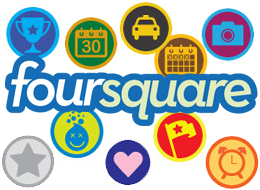Does Your Audience Really Want Another Merit Badge?
In elementary school, gold stars were everything! It was a competition with our classmates. It made something boring and monotonous more interesting and engaging. As each star got harder and harder to achieve, the value of those cheap Avery labels grew and grew. Little did we realize we were under the spell of game mechanics.
Game mechanics are a set of tools and systems designed to make an experience more engaging, sticky, and viral, incentivizing certain behaviors.
Demand for game mechanics has grown since the introduction of Foursquare. People became mayors of their favorite haunts, got free cheese fries, and even a spiffy virtual badge to show off to their friends on Facebook and Twitter. Local shops got repeat business for their trouble.
Now everyone wants in.
Unfortunately, not everyone that knows how to make a good website knows how to make a good game. Web designers are used to creating simple interactive experiences that get users from point A to point B as quick and easy as possible. Game development is about extended engagement through emotional connection, intensity, difficulty, goals, and a narrative. Before game mechanics can be effectively used, web designers are going to have to brush up a bit on their game development skills. They can't slap a badge on something and call it a day.
Despite the advent of push button game mechanics, some designers and companies are venturing into better integrated game development. Mint.com promotes financial health through game play; DevHub which has had success by "gamifying" the process of building websites; and EpicWin uses game play to make chores fun.
As game mechanics continue to improve, we will see less badges and leader boards added to sites without proper integration. Users will be further engaged through increasing difficulty, storytelling, and emotional connection. Web designers will embrace their inner gamer, expanding their skills, and finally earn those coveted gold stars for their achievement in game mechanics.
Being The Board
In the game of life, what role do you play? Are you the pawn, the thimble, or a domino falling to the whims of chance? Or do you consider yourself the dealer, controlling which cards are dealt?
Strangely, no one ever thinks about being the board.
According to The Art of Possibility by Rosamund and Benjamin Zander, when we look at ourselves as the framework upon which events play out, we gain a more conscious, constructive, and objective view. We let go of being the victim and stop playing God. We remove assumptions and look at things as they are instead of as we are.
Say you have a client who keeps shooting down your ideas with flimsy excuses. You feel like the deck is stacked against you and it’s not fair. Now you are looking for someone to blame for not getting your ideas across and getting nowhere. But, if you can get over yourself and be the board, you might see what’s really keeping you from passing go and collecting $200 dollars.
You may realize that your client is ignorant because you didn’t share the rules of the game. You failed to fully enroll them in your logic, your research, and your understanding of their target market. Since you didn’t share the rules, you can’t be too mad when they don’t play the game correctly.
Now that you’ve come to a better conclusion of events, you can take responsibility for what needs to be done. You can share your logic with the client and get him on board, not only selling your ideas, but repairing the relationship.
Being the board and accepting responsibility is not about blame. It is about finding solutions that are constructive. It’s less shoulda, coulda, woulda, and more about moving forward. It’s saying this is this, so we’re going to do that, and I hope you’ll come along with me.
Augmented Reality Check: What really counts as added value?
In an effort to add value to their products and services, many companies have started to embrace augmented reality (AR). The technology is expected to generate $350 million dollars for businesses by 2014. However, not every application of the technology lives up to this promise. Here, we'll examine what it takes to actually add value to a product using AR, and what is just a gimmick.
Our first example is a cookie with an AR code baked in. The cookie is not a new product, but is a good example of what most companies are doing with the technology.
Demo of Augmented Reality Cookies from Tellart on Vimeo.
So what's the added value? It does very little to actually entice me, and feels like a waste of time. Though a creative use of 3D technology, it unfortunately still falls flat.
Our other example was developed by AKQA for the US Postal Service to help people see which box will fit their shipping needs.
This application is not flashy. However, it is a memorable and innovative use of AR technology. It provides users with an engaging experience that is practical and useful, generating repeat visits, and most importantly, repeat business.
In order for companies to succeed using AR, or any other technology to add value to their products, the use of the technology must be truly innovative. It must be practical to the product, and engaging to the consumer. If not, the company risks being eaten up by the competition.
What's On Your Personal Mood Board?
Inspiration, as the cliché says, can spring from anywhere. However, how often do we vacate our usual books, blogs, and bits of pop culture to discover what inspirations lie beyond our sphere of influence?
As creatives, it is important that we act as sponges of the world, soaking up knowledge so that we may better reflect and interpret it. With that said, we should be a little adventurous in finding inspiration in order to refresh our thinking. Not only does researching and participating in something new provide sources of inspiration, but it improves our cognitive thinking by causing us to break our usual patterns.
Finding a new source of inspiration doesn’t have to be a chore, either. Just take little things in your life and use your imagination to come up with ways to skew the experience. Try reading a book from the children’s section of a book store while actually sitting in a chair in the children’s section. Be a fly on the wall at an elderly singles function. Maybe take a class in medieval cuisine or advance geo physics. Or, just take the time to do something you haven’t found the time to actually do. Whatever the case, opening yourself to new habits and experiences can only lead you to greater inspirations.

